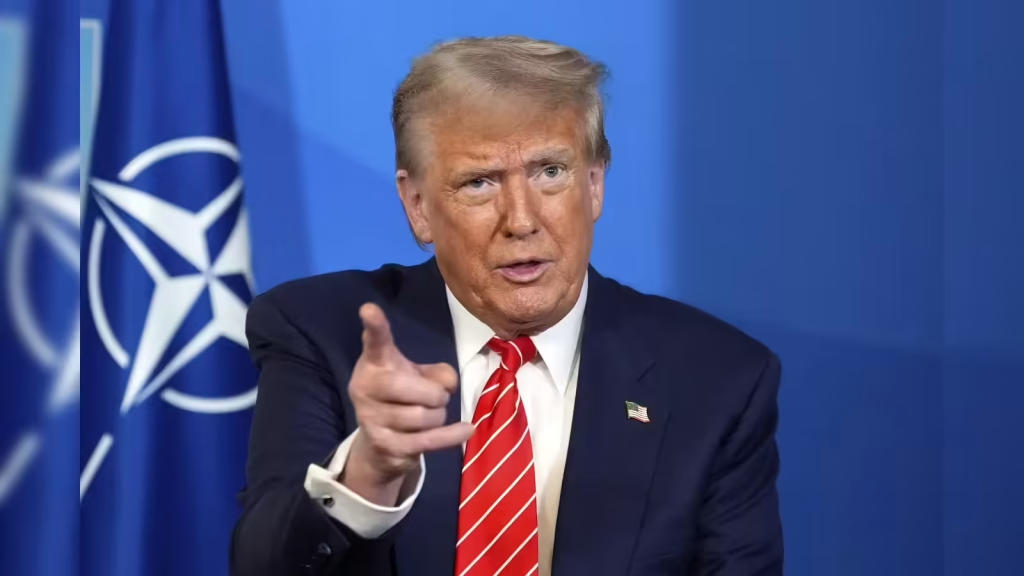The Trump administration has significantly intensified its efforts to pressure Federal Reserve Chair Jerome Powell, moving beyond President Donald Trump’s frequent public criticisms.
Sources indicate that a coordinated campaign by White House advisers is now underway, designed to exert more leverage over Powell and the Federal Open Market Committee’s (FOMC) insistence on independence, particularly concerning interest rates.
While officials currently state there is no active effort to remove Powell from his position, Trump’s growing frustration with the Fed’s refusal to lower rates has led to the most substantial steps yet to challenge the central bank’s autonomy.
New Tactics and Accusations Emerge
The escalation became apparent with a public letter from Office of Management and Budget Director Russell Vought to Powell.
Vought suggested that Powell might have broken the law in his handling of a planned renovation of the Fed’s headquarters, citing potential violations of the National Capital Planning Act.
Vought framed his inquiry as a concern over cost overruns, aligning with Trump’s background as a developer. When asked about the Fed’s independence, Vought dismissed the question as “immaterial,” stating, “The president has a policy view about needing lower rates.
He has a policy view with regard to the fact that Jerome Powell has been late repeatedly. The Fed has been mismanaged.”
Coinciding with Vought’s letter, three new loyalist members were quietly sworn into the National Capital Planning Commission, just ahead of its Thursday evening meeting.
These moves bear the hallmarks of a familiar Trump administration playbook: initiating a seemingly minor allegation, amplifying it, and then using it as a basis for further investigation or action to delegitimise an opponent.
The direct involvement of Vought, a highly effective and loyal Trump lieutenant, signals a clear escalation.
In response, the Fed on Friday published a “Frequently Asked Questions” page about its headquarters renovation, pushing back on claims about costs and features, including photos of leaks and foundation cracks. The Fed declined further comment.

No Immediate Plans for Powell’s Removal, But Pressure Continues
Despite the intensified pressure, White House officials maintain there is no active effort to remove Powell, a move they have previously advised against due to significant legal concerns and anticipated market disruption.
Trump himself reiterated on Friday that he has no plans to fire Powell, stating, “No, I think he’s doing a terrible job,” but refusing to commit to removal.
Concerns about the legality of removing a Fed chair remain, even after a May Supreme Court ruling that clarified presidential power over executive officials but specifically exempted the “uniquely structured” Federal Reserve.
The primary deterrent to firing Powell is the expectation of an immediate and significant market sell-off, coupled with a lengthy and complex legal battle.
The current strategy appears to be focused on increasing pressure on both Powell and the other voting members of the FOMC.
An administration official noted, “We’re aware Powell doesn’t decide on his own… Our view is that voting members have the responsibility to look at the data regardless of their view.”
Succession, Race, and Public Commentary
The ongoing race to replace Powell, whose term as chair expires next year, is also influencing the dynamic.
Kevin Warsh, considered a top candidate, recently argued on Fox Business Network that tariffs are not inflationary and that the economy is being held back by “bad economic policies coming from the central bank.”
Kevin Hassett, another leading contender who previously advised Trump against firing Powell, has made similar economic arguments.
The public attacks on Powell’s policy views, initially primarily from Trump himself, have now become a coordinated effort by his allies. Figures like Senator J.D. Vance and Federal Housing Finance Agency Director Bill Pulte have echoed Trump’s criticisms, with Pulte even calling for Powell’s resignation.
Peter Navarro, a long-serving Trump adviser, published a scathing opinion column and made multiple TV appearances criticising Powell.
Commerce Secretary Howard Lutnick also made an extraordinary public statement, saying Powell “has got to change, and he’s got to go.”
Advisers suggest the ultimate goal isn’t Powell’s removal but to build pressure on Fed board members ahead of their next meeting.
Treasury Secretary Scott Bessent, Trump’s top economic adviser, explained the strategy by likening it to a basketball coach “working the refs,” hinting that persistent pressure is viewed as an effective tactic.


 Trending
Trending 
